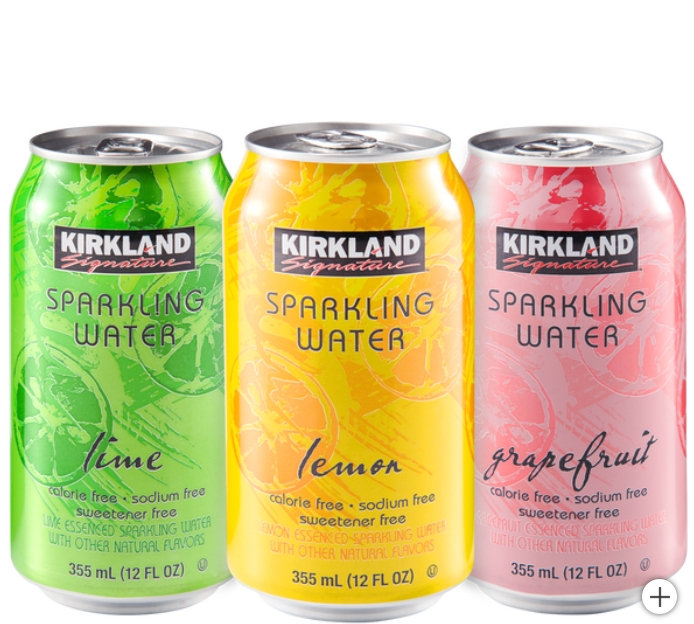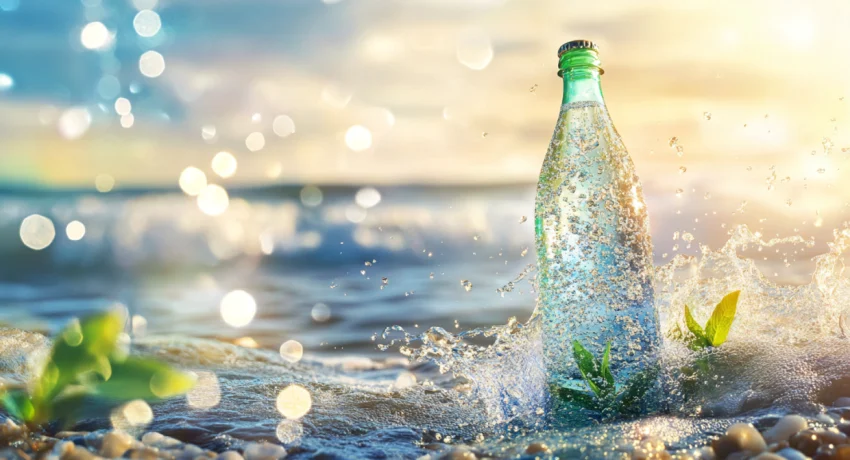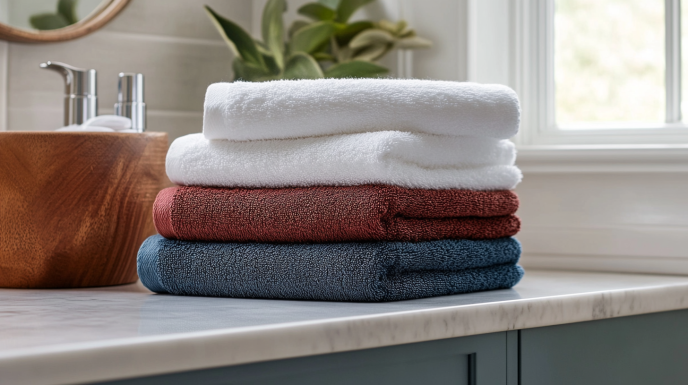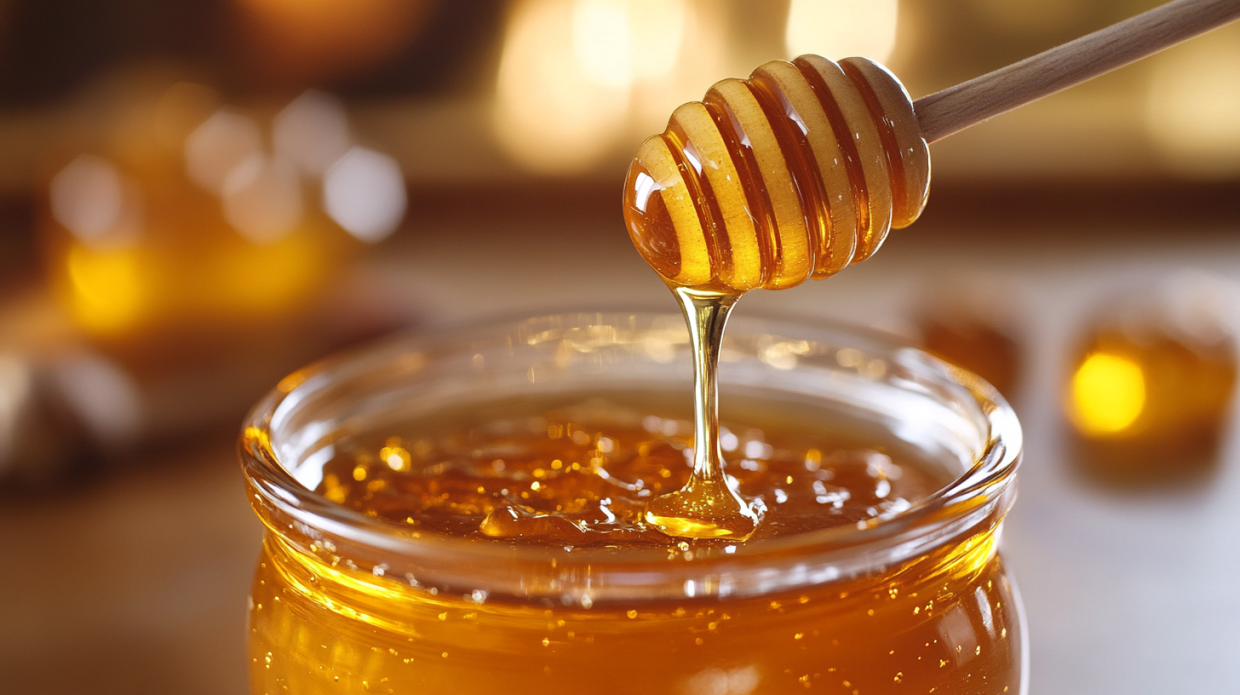
Kirkland Signature Sparkling Water, Variety Pack, 12 fl oz, 35 ct
- Calorie free
- Sodium free
- Sweetener free
- Variety includes: Lime, Lemon, Grapefruit
Quenching Your Curiosity About Costco’s Fizzy Phenomenon
In a world where hydration meets sophistication, sparkling water has carved out its niche as the beverage of choice for those seeking something more exciting than still water but healthier than sugary sodas. Among the contenders in this effervescent arena, Kirkland Sparkling Water has emerged as a frontrunner for both value and quality, captivating the taste buds of budget-conscious bubbly enthusiasts everywhere.
As a devoted sparkling water aficionado who has sampled more varieties than I care to admit, I’ve developed a particular fondness for Kirkland’s offering. The satisfying crack of opening a fresh can, the lively fizz that dances across your tongue, and the subtle whisper of flavor that doesn’t overpower—these simple pleasures have made Kirkland Sparkling Water a staple in my refrigerator.
But what exactly makes this Costco gem so special? Is it truly as healthy as it claims? How does it stack up against premium brands like LaCroix? And perhaps most importantly for the savvy shopper, is it worth making that Costco run? Today, we’re diving deep into the effervescent world of Kirkland Sparkling Water to answer all these questions and more.
A Rainbow of Refreshment: Kirkland Sparkling Water Flavors
When it comes to variety, Kirkland doesn’t disappoint. Their sparkling water lineup features an impressive array of flavors designed to please virtually any palate. The standard variety pack includes:
- Lime: A zesty, bright flavor that evokes memories of summer cocktails
- Lemon: Crisp and refreshing with just the right amount of citrus bite
- Grapefruit: Slightly tangy with a sophisticated bitter note
- Black Cherry: Sweet and fruity without being cloying
Beyond these staples, Costco occasionally rotates in seasonal flavors or regional specialties. Some locations have reported spotting flavors like:
- Watermelon
- Orange
- Berry
- Coconut
- Passion Fruit
The beauty of Kirkland’s approach to flavoring lies in its subtlety. Unlike some competitors that hit you over the head with artificial-tasting fruit bombs, Kirkland’s flavors are delicate hints rather than dominant forces, allowing the refreshing quality of the sparkling water itself to shine through.
As someone who typically reaches for citrus flavors, I’ve found Kirkland’s lime to be particularly impressive—offering just enough zing to keep things interesting without tasting like cleaning product, a pitfall many sparkling water brands fall into.
The Health Question: Is Kirkland Sparkling Water Good For You?
In our increasingly health-conscious world, beverages face intense scrutiny for their nutritional impact. The good news? Kirkland Sparkling Water passes this examination with flying colors.
Let’s start with the basics: Kirkland Sparkling Water contains zero calories, zero sugar, and zero sodium. There are no artificial sweeteners lurking in the ingredients list, no sneaky carbohydrates, and nothing that would trigger concerns for those monitoring their intake for health or weight management reasons.
The ingredients list is refreshingly simple:
- Carbonated water
- Natural flavors
That’s it. No phosphoric acid that might erode tooth enamel, no sodium content to worry about if you’re managing hypertension, no artificial colors or preservatives.
For those concerned about dental health, it’s worth noting that while all carbonated beverages contain carbonic acid (which gives them their fizz), the impact on dental health from unsweetened sparkling water is minimal compared to sugary sodas or even fruit juices.
Some nutrition experts even suggest that sparkling water can aid in weight management, as the carbonation may promote a feeling of fullness. While I wouldn’t claim it as a weight loss miracle, I’ve certainly found that reaching for a can of Kirkland Sparkling Water helps curb snacking urges between meals.
Perhaps most importantly for those with dietary restrictions, Kirkland Sparkling Water is:
- Gluten-free
- Vegan
- Keto-friendly
- Paleo-compliant
In an era where finding beverages that meet multiple dietary needs can be challenging, Kirkland Sparkling Water stands out as an option that virtually anyone can enjoy without concern.
The Sweet Truth: Sugar Content in Kirkland Sparkling Water
In a beverage landscape dominated by hidden sugars, Kirkland Sparkling Water offers a refreshing transparency: it contains absolutely zero sugar. This makes it a stellar alternative to sodas, which can contain upwards of 39 grams of sugar per 12-ounce serving.
The absence of sugar doesn’t mean a sacrifice in taste, however. The natural flavors provide enough sensory interest to satisfy those transitioning away from sweeter drinks. I’ve personally witnessed several friends who were die-hard soda drinkers gradually make the switch to Kirkland Sparkling Water, finding that after an adjustment period, they actually preferred the cleaner taste.
For those wondering about artificial sweeteners, you can rest easy—there are none. No aspartame, sucralose, acesulfame potassium, or any other chemical sweeteners that might trigger concerns or digestive issues for sensitive individuals.
This sugar-free profile makes Kirkland Sparkling Water an excellent choice for:
- Diabetics monitoring blood glucose
- Those following low-carb or keto diets
- Anyone trying to reduce their overall sugar consumption
- People working on breaking soda habits
I’ve found that adding a splash of fresh lemon or lime juice can enhance the flavors even further without significantly impacting the nutritional profile, should you crave a slightly more pronounced taste experience.
The Costco Connection: Where to Buy and What You’ll Pay
As the name suggests, Kirkland Sparkling Water is exclusively available at Costco warehouses and through Costco’s online shopping platform. This exclusivity is part of what enables its impressive price point, as it cuts out middleman retailers.
In terms of packaging, Kirkland Sparkling Water comes in 12-ounce aluminum cans, typically sold in cases of 24 or 35 cans. The variety packs generally contain an equal distribution of the available flavors, though single-flavor cases are occasionally available in some locations.
The pricing is where Kirkland truly shines in comparison to competitors. As of my last Costco run, a 35-pack of Kirkland Sparkling Water was priced at approximately $7.99. That breaks down to roughly 23 cents per can—a fraction of what you’d pay for brands like LaCroix, Spindrift, or Perrier, which often cost 50-75 cents per can even when purchased in bulk.
For perspective, let’s crunch some numbers. If you drink two cans of sparkling water daily, switching from LaCroix to Kirkland could save you approximately:
- $365 per year (based on a 50-cent price difference per can)
- $547 per year (based on a 75-cent price difference per can)
Those savings alone could justify the cost of a Costco membership, which typically runs about $60 annually for the basic tier.
It’s worth noting that availability can vary by location and season. Some Costco warehouses carry a more extensive selection than others, and occasionally, certain flavors may be temporarily out of stock. In my experience, the standard variety pack is reliably available year-round, while specialty flavors tend to be more seasonal or regional.
Brand Battle: Kirkland Sparkling Water vs. LaCroix
The sparkling water market has its reigning celebrities, with LaCroix perhaps being the most recognized name in the industry. How does the Costco contender compare to this established brand?
In terms of carbonation level, Kirkland Sparkling Water tends to feature slightly more aggressive bubbles than LaCroix. The carbonation in Kirkland cans remains robust even after being opened for some time, while LaCroix sometimes loses its fizz more quickly. For bubble enthusiasts who enjoy that sharper mouthfeel, Kirkland might have the edge.
Flavor-wise, the comparison becomes more subjective. LaCroix offers a wider variety of flavors, including some more exotic options like Pamplemousse (grapefruit) and Múre Pepino (blackberry cucumber). However, many blind taste tests have shown that consumers often can’t distinguish between Kirkland and LaCroix when sampling the same flavor profiles.
The most significant difference, undoubtedly, is price. LaCroix typically costs about twice as much as Kirkland, without offering a demonstrably superior product. This price difference becomes particularly notable when considering bulk purchases for regular consumption.
Packaging aesthetics might favor LaCroix, with its colorful, Instagram-friendly cans that have become something of a status symbol. Kirkland’s more understated design won’t make as splashy an appearance in your social media posts, but the savings in your bank account might compensate for the less photogenic can.
Environmental considerations are relatively equal—both brands use aluminum cans, which have higher recycling rates than plastic bottles. Neither brand has made particularly groundbreaking commitments to sustainability beyond this standard packaging choice.
As someone who has stocked both in my refrigerator, I’ve found that guests rarely comment on any difference in taste, and the Kirkland option disappears just as quickly during gatherings.
The Bubble Science: How Kirkland Sparkling Water Gets Its Fizz
Unlike certain premium sparkling waters that advertise natural carbonation from springs, Kirkland Sparkling Water is artificially carbonated during the bottling process. This is standard practice for most sparkling waters on the market, including many high-end brands that don’t explicitly advertise their carbonation method.
The process involves infusing pressurized carbon dioxide into water, creating carbonic acid that delivers those satisfying bubbles. The carbonation level in Kirkland Sparkling Water hits a sweet spot—robust enough to maintain its fizz even when poured over ice, but not so aggressive that it becomes uncomfortable to drink.
Contrary to some internet rumors, the carbonation process doesn’t introduce any caffeine into the product. Kirkland Sparkling Water is completely caffeine-free, making it suitable for consumption at any time of day without concerns about interfering with sleep patterns.
For those interested in the technical aspects, the carbonation level is measured in volumes of CO2, with Kirkland appearing to clock in at approximately 2.5 to 3 volumes—similar to most commercial sparkling waters. This is less than typical sodas (around 3.5 to 4 volumes) but more than many naturally carbonated mineral waters.
The consistent carbonation level is one of Kirkland’s quality control successes. I’ve rarely encountered a flat can or one with insufficient fizz, something that cannot be said for all competitors in this price range.
Inside the Can: Ingredients and Nutritional Information
The nutritional label on Kirkland Sparkling Water is about as simple as they come, which is a good thing for a beverage positioning itself as a healthy option.
Nutritional Information (per 12 oz can):
- Calories: 0
- Total Fat: 0g
- Sodium: 0mg
- Total Carbohydrates: 0g
- Sugars: 0g
- Protein: 0g
As previously mentioned, the ingredients list is equally minimalist:
- Carbonated water
- Natural flavors
The term “natural flavors” does leave some room for interpretation, as FDA regulations allow this designation for a wide range of flavor compounds derived from natural sources but potentially processed extensively. However, given the subtle flavor profile of Kirkland Sparkling Water, the concentration of these flavors is likely quite low.
For those concerned about specific allergens, Kirkland Sparkling Water is produced in facilities that maintain allergen protocols, and the product itself contains none of the major allergens required to be listed on food labels.
pH levels in Kirkland Sparkling Water typically range from 3.5 to 4.5, making it slightly acidic (as are all carbonated beverages due to the formation of carbonic acid). This is less acidic than most sodas and fruit juices, posing minimal concern for dental health when consumed in reasonable quantities.
Waistline Friendly: Kirkland Sparkling Water and Weight Management
For those monitoring their weight, Kirkland Sparkling Water offers several advantages that make it a smart choice in a comprehensive approach to weight management.
First and foremost, with zero calories per serving, it can replace higher-calorie beverages without requiring any caloric accounting. Substituting just one 12-ounce sugar-sweetened soda daily with Kirkland Sparkling Water could eliminate approximately 140 calories from your diet—potentially resulting in about 14.5 pounds of weight loss over a year if all other factors remain constant.
Beyond the simple calorie math, sparkling water may offer additional benefits for weight management:
- Increased satiety: The carbonation can promote a feeling of fullness, potentially reducing overall caloric intake when consumed before or during meals.
- Improved hydration: Proper hydration is essential for optimal metabolic function, and many people find flavored sparkling water easier to consume in quantity than plain water.
- Reduced sugar cravings: For many, the light flavor and sensory experience of carbonation can help address cravings for sweeter beverages, making dietary adherence easier.
- Digestive benefits: Some people report that moderate consumption of sparkling water aids digestion, potentially alleviating bloating and improving overall gastrointestinal comfort.
I’ve personally found that keeping Kirkland Sparkling Water on hand helps me avoid reaching for less beneficial options when I want something more interesting than plain water. The variety of flavors prevents palate fatigue, making it easier to maintain consistent hydration without straying toward sugary alternatives.
Bulk Buying: Kirkland Sparkling Water Availability and Storage
One of the defining characteristics of Costco’s business model is bulk purchasing, and Kirkland Sparkling Water follows this tradition. The standard packaging of 24 or 35 cans per case makes it ideal for households with multiple sparkling water drinkers or individuals who consume it regularly.
The bulk packaging raises practical considerations about storage. A 35-pack case takes up approximately 1.5 cubic feet of space, requiring significant refrigerator real estate if you prefer your sparkling water chilled. Many consumers opt to store the majority of their cases at room temperature, refrigerating just a portion at a time.
From a preservation standpoint, Kirkland Sparkling Water has an excellent shelf life. The cans typically display a “best by” date ranging from 9-12 months from production. In practice, the product remains perfectly safe to consume well beyond this date, though the flavor profile may diminish slightly over extended periods.
The aluminum cans provide good protection from light degradation, which can affect flavored beverages in clear containers. They also maintain carbonation more effectively than plastic bottles, which can allow carbon dioxide to escape gradually over time.
For those concerned about emergency preparedness, Kirkland Sparkling Water can be a welcome addition to supply kits, offering a more interesting hydration option during power outages or other situations where bottled beverages are necessary.
Behind the Brand: Who Makes Kirkland Sparkling Water?
Like many Kirkland Signature products, the sparkling water is manufactured by a third-party producer under contract with Costco. While Costco doesn’t officially disclose its manufacturing partners for most Kirkland products, industry speculation and packaging similarities suggest that Kirkland Sparkling Water may be produced by the same facilities that manufacture some national brands.
This practice of contract manufacturing is common in the beverage industry and often results in products that are identical or nearly identical to name-brand counterparts, differing primarily in packaging and price. In some cases, the same production lines may alternate between manufacturing a national brand and its store-brand equivalent.
The quality control standards for Kirkland products are generally rigorous, with Costco maintaining specific requirements for manufacturers to earn and keep their contracts. This typically results in store brands that meet or exceed the quality of their more expensive counterparts.
For those curious about production locations, the can coding sometimes provides clues about which facility produced a specific batch, though deciphering these codes requires industry knowledge beyond most consumers’ reach.
Costco’s business model relies heavily on maintaining customer satisfaction with Kirkland products, as these house brands drive membership renewal and store loyalty. This creates a strong incentive for the company to ensure consistent quality in its sparkling water, even if the specific manufacturer changes over time.
Cans vs. Bottles: Kirkland Sparkling Water Packaging
Currently, Kirkland Sparkling Water is available exclusively in 12-ounce aluminum cans rather than glass or plastic bottles. This packaging choice offers several advantages:
- Portability: Cans are lightweight, unbreakable, and easy to transport, making them ideal for picnics, hiking, or workplace refreshment.
- Recyclability: Aluminum has one of the highest recycling rates of any packaging material, with approximately 75% of all aluminum ever produced still in circulation today.
- Preservation: Cans provide superior protection from light and maintain carbonation more effectively than most plastic containers.
- Cooling efficiency: The thermal conductivity of aluminum allows cans to chill more quickly than glass alternatives.
- Space efficiency: The uniform shape allows for compact storage in refrigerators and pantries.
The cans feature a standard pull-tab opening mechanism and don’t require any special tools to access. The current design includes flavor-specific color coding on the minimalist label, making it easy to identify your preferred variety at a glance.
From a consumption standpoint, some purists argue that glass provides the optimal taste experience for sparkling beverages, avoiding any potential metallic notes. However, in blind taste tests, most consumers cannot detect meaningful differences between properly stored canned and bottled sparkling waters.
For those who prefer drinking from glass for environmental or taste preference reasons, simply pouring the Kirkland Sparkling Water into a glass provides an easy solution without sacrificing the economic and storage benefits of the canned format.
The Verdict: What Reviewers Say About Kirkland Sparkling Water
Consumer sentiment about Kirkland Sparkling Water tends to be overwhelmingly positive, particularly when the price-to-quality ratio is considered. Online reviews and social media commentary typically highlight several consistent themes:
- Value proposition: Nearly every reviewer mentions the exceptional price point compared to national brands.
- Carbonation quality: Many note that the fizz level is perfect—stronger than some premium brands but not aggressively intense.
- Flavor authenticity: Reviews frequently praise the natural-tasting flavors that avoid the artificial notes present in some competitors.
- Packaging convenience: The durability and portability of the cans receive positive mentions.
- Versatility: Many reviewers appreciate the product both as a standalone beverage and as a mixer.
Criticisms, when they appear, typically focus on:
- Limited flavor selection: Some wish for more exotic options beyond the standard varieties.
- Availability limitations: The Costco-exclusive distribution frustrates some who don’t live near a warehouse.
- Slight metallic notes: A small percentage of reviewers report detecting a can-influenced taste, though this is common across all canned beverages.
In my personal circle, Kirkland Sparkling Water has converted several brand-loyal LaCroix drinkers based on blind taste tests, with the substantial cost savings sealing the deal once the comparable quality was established.
Ethical Considerations: Is Kirkland Sparkling Water Vegan?
For those following a vegan lifestyle, Kirkland Sparkling Water is indeed vegan-friendly. The product contains no animal-derived ingredients in either the water itself or the natural flavoring compounds.
Additionally, as far as public information indicates, Kirkland Sparkling Water does not undergo testing on animals, another consideration for many ethical consumers.
The aluminum cans are also free from animal-derived components in their manufacturing, making the entire product suitable for vegan consumption without reservation.
This vegan-friendly status extends to other dietary restrictions as well—the product is naturally gluten-free, kosher, and halal, making it accessible to consumers with various religious and health-based dietary practices.
Beyond Hydration: Using Kirkland Sparkling Water in Cocktails and Cooking
While excellent on its own, Kirkland Sparkling Water’s versatility extends into culinary applications that can elevate both alcoholic beverages and food preparation.
In the realm of mixology, Kirkland Sparkling Water functions brilliantly as:
- A spritz component in wine-based drinks like Aperol Spritz
- A lighter alternative to tonic water in gin drinks
- A volumizer for stronger spirits that adds effervescence without sweetness
- The base for mocktails when combined with fruit juices and herbs
The lime and grapefruit varieties particularly shine in cocktail applications, providing subtle citrus notes that complement a wide range of spirits.
In cooking, Kirkland Sparkling Water can improve:
- Batter for tempura and other fried foods, creating a lighter, crispier texture
- Homemade bread dough, adding aeration and lightness
- Marinades for meats, where the slight acidity can help tenderize
- Light syrups for desserts, where the carbonation adds interesting dimension
I’ve found the unflavored variety works best for cooking applications, while the flavored options excel in beverage recipes where their subtle fruit notes can enhance the final product.
Sparkling Water Semantics: Understanding the Terminology
Some confusion exists around the various terms used for carbonated water products. Kirkland Sparkling Water falls into the category of “flavored sparkling water” rather than seltzer, club soda, or mineral water—each of which has specific characteristics.
Here’s a quick breakdown of the differences:
- Sparkling water: Generally refers to carbonated water with added flavors but no sweeteners or sodium.
- Seltzer: Plain carbonated water without added minerals, flavors, or sodium. Kirkland doesn’t currently offer an unflavored seltzer option.
- Club soda: Carbonated water with added minerals and sodium compounds that give it a slightly different taste profile. Kirkland Sparkling Water contains no added sodium or minerals.
- Mineral water: Naturally carbonated water from springs that contains various minerals. Kirkland Sparkling Water is artificially carbonated and doesn’t claim mineral content.
- Tonic water: Carbonated water with added quinine and usually sweeteners. Kirkland Sparkling Water contains neither quinine nor sweeteners.
Understanding these distinctions can help consumers make more informed choices based on their specific preferences and needs. For those watching sodium intake, for instance, Kirkland Sparkling Water offers advantages over club soda, which typically contains added sodium compounds.
Conclusion: The Effervescent Bottom Line
After exploring every bubble and flavor note of Kirkland Sparkling Water, the conclusion seems clear: Kirkland Sparkling Water represents one of the best values in the sparkling beverage market today, delivering quality comparable to premium brands at a fraction of the cost.
Its combination of clean ingredients, satisfying carbonation, well-balanced flavors, and remarkable price point makes it a standout choice for anyone looking to stay hydrated in a more interesting way than plain water allows, without the health concerns associated with sugary beverages.
Whether you’re a sparkling water connoisseur or someone just beginning to explore alternatives to soda, Kirkland Sparkling Water offers an accessible entry point that doesn’t compromise on quality. The minimal environmental footprint of the aluminum packaging adds another dimension of appeal for environmentally conscious consumers.
The only significant drawback—the need for a Costco membership and the bulk purchasing format—is easily offset by the substantial savings for regular consumers. For households where sparkling water is a daily staple, the mathematics of switching to Kirkland become increasingly compelling.
As with any product, personal preference plays a significant role in determining the “best” sparkling water, but Kirkland has positioned itself admirably in the value-quality matrix. Its growing popularity suggests that more and more consumers are discovering what savvy Costco shoppers have known for years: sometimes the best products come without the premium price tag.
So next time you find yourself pushing an oversized cart through the cavernous aisles of Costco, consider adding a case of Kirkland Sparkling Water to your haul. Your taste buds—and your wallet—will likely thank you for making the switch to this effervescent everyday luxury.




